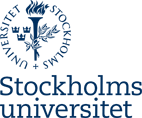1) The thesis demonstrated that organic residues from clay cooking pots could be extracted and interpreted from a selection of three Late Holocene archaeological sites and cultural sequences in northern Japan (Hokkaido).
2) Overall, the research presented evidence of a major shift in foodways in this period. Specifically, the close and persistent relationship between pottery use and the processing of aquatic resources that emerged in NE Asia during the Late Pleistocene and early Holocene, only started to break down in the Late Holocene, especially during the Okhotsk Culture period (c. 400-1000 CE).
3) The research showed that pottery of the Okhotsk Culture still focused on processing resources from the aquatic food web, but also started to diversify into the processing of terrestrial animal and plant foods.
4) The research also produced improved chronological periods for this region. Previously, the date at which the Okhotsk Culture appeared at the multi-phase site of Hamanaka 2 on Rebun Island has been uncertain. The thesis demonstrated that prior archaeological and stratigraphic information can be used in a Bayesian framework to improve the accuracy of radiocarbon dates to age-estimate the start of the Okhotsk period c. 400-550 cal CE.
5) Likewise, the date at which the Okhotsk Culture appeared at the multi-period site of Kafukai 1 and 2 on Rebun Island has been uncertain. To further tackle this issue, the thesis has helped test and applied a new method for direct dating of pottery from three pit-houses at the Kafukai 1 and 2 sites. This demonstrated that pottery can be directly ¹⁴C-dated using a novel approach where all lipids absorbed in a ceramic sherd sample are extracted, and consequently analyzed for molecular and single-compound evidence using GC-MS and GC-C-IRMS to determine the source of carbon in the sample material. Moreover, Bayesian inference and mixing models provided a framework that was successfully applied to compute a suitable reservoir offset for an organic sample with carbon potentially derived from multiple marine reservoirs. With this approach it was demonstrated that the Kafukai 2 settlement (Susuya) predates the Kafukai 1 (Okhotsk) site.
6) Finally, the thesis argues that both these approaches (points 4 and 5) potentially have utility well beyond Rebun Island and Hokkaido. Specifically, they could be applied more widely in coastal and island archaeology, especially where marine reservoir effects generate major problems for accurate dating. This is especially the case in the Arctic due to the high cultural reliance on marine resources.



